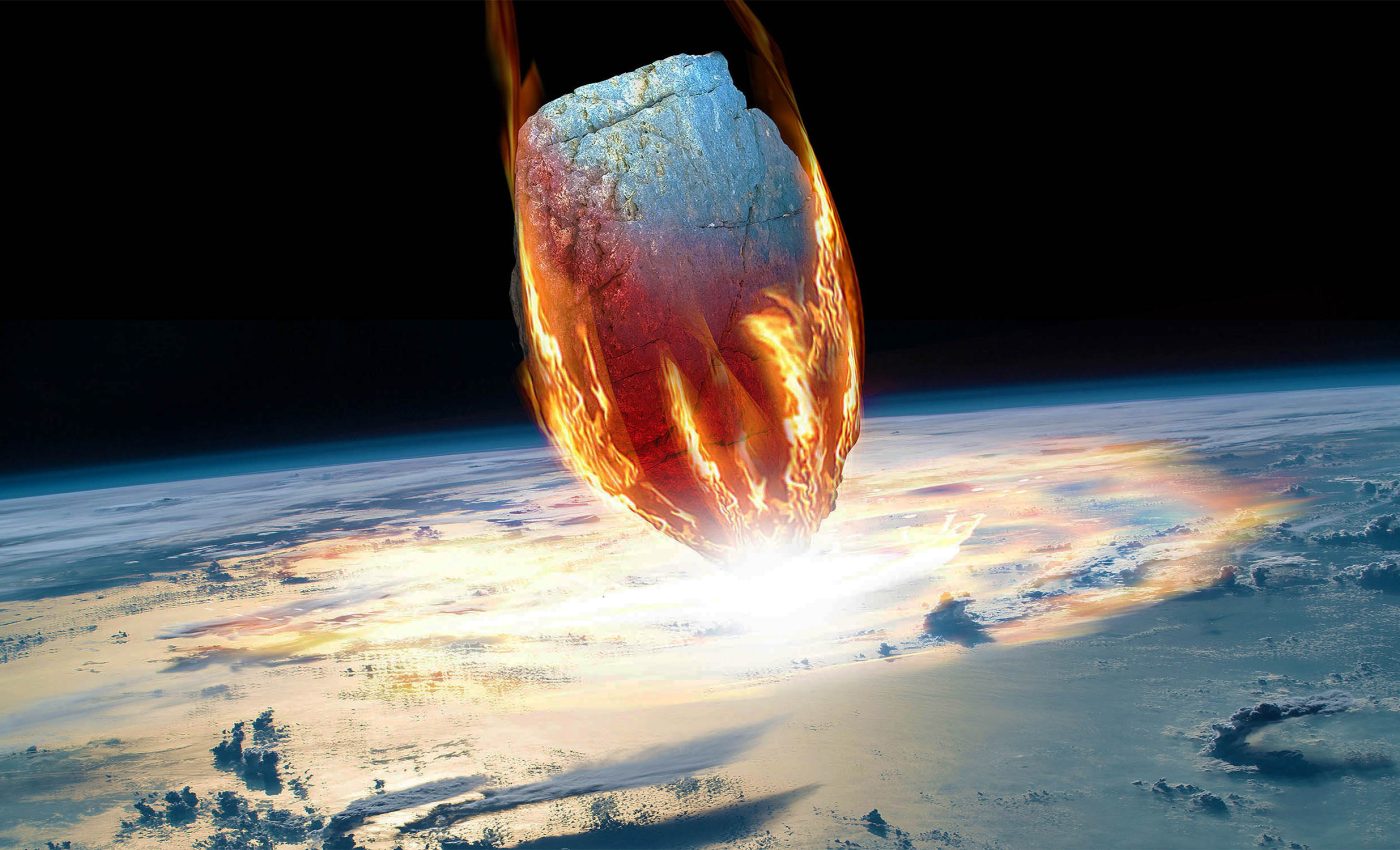
Meteorite 200 times bigger than the dinosaur-killer hit Earth, boiled oceans, and sparked life
Earth’s timeline continues to captivate humanity with ancient wonders and mysteries. Around 3.26 billion years ago, one period packed with celestial events saw the planet bombarded by meteorites.
The “S2” meteorite was massive, to say the least, and it continues to divulge secrets about Earth’s past.
Earth’s first oceans and continents
Scientists often wonder, “When did the first oceans appear? What about continents? Plate tectonics? How did these celestial collisions shape the evolution of life?”
A recent study focuses on the actual impact of the S2 meteorite more than three billion years ago and how that changed Earth’s history, ultimately resulting in humanity, technology, and the AI that is being used to decipher the hidden clues left behind.
Nadja Drabon, an assistant professor at Harvard’s Department of Earth and Planetary Sciences led the research. Drabon is a seasoned early-Earth geologist with a near-insatiable curiosity about our planet’s infancy.
Her interest lies in those primeval eons, when single-celled bacteria and archaea were the solo performers on Earth, and meteoritic bombardment was the rhythm of life.
Earth during the Archean Eon
One of the earliest chapters of Earth’s history, known as the Archean Eon, spanned from about 4 billion to 2.5 billion years ago.
During this time, our planet was a vastly different place, with a hot, molten surface gradually cooling to form the first stable continents and oceans. The atmosphere was primarily composed of volcanic gases, lacking the oxygen we breathe today.
Despite these harsh conditions, life began to take root in the form of simple single-celled organisms like bacteria and archaea.
These early life forms thrived in the oceans, harnessing energy from chemicals and, later, from sunlight through primitive photosynthesis, which began to slowly alter the atmosphere.
By the end of the Archean, the slow rise in atmospheric oxygen from photosynthetic organisms set the stage for more complex life forms to appear in the following Proterozoic Eon.
So, the Archean Eon was an important time for stabilizing the planet and driving biological innovation, laying the groundwork for the amazing diversity of life we see today.
The question is… what role did the S2 meteorite play in this dramatic spark of life?
Lage meteorite impacts and early life
“Large meteorite impacts must have strongly affected the habitability of the early Earth. Rocks of the Archean Eon record at least 16 major impact events, involving bolides larger than 10 km in diameter,” wrote the researchers.
“These impacts probably had severe, albeit temporary, consequences for surface environments. However, their effect on early life is not well understood.”
S2 meteorite: Four Mount Everests came calling
The study begins in the Barberton Greenstone belt of South Africa, where Drabon and her team traced the footprints of the S2 meteorite.
Their detailed analysis of sedimentology, geochemistry, and carbon isotope compositions paints a startling tableau of the cataclysmic day when a meteorite the size of four Mount Everests crashed to Earth.
“Picture yourself standing off the coast of Cape Cod, in a shelf of shallow water. It’s a low-energy environment, without strong currents. Then all of a sudden, you have a giant tsunami, sweeping by and ripping up the sea floor,” said Drabon.
Early life on Earth from S2 meteorite
The S2 meteorite — about 200 times larger than the Chicxulub asteroid that doomed the dinosaurs — stirred the proverbial pot, triggering a tsunami that dispersed land debris into coastal regions.
The staggering heat from the impact evaporated the top layer of the ocean and heated the atmosphere. This shrouded the planet in a dense cloud of dust and temporarily halted photosynthetic activity.
Yet, in line with the undying spirit of life, bacterial populations bounced back. With this resurgence, came a surge in unicellular organisms that fed on phosphorus and iron.
A veritable feeding frenzy began. It was driven by a surge of iron from the deep oceans upwelling into shallow waters, aided by the colossal tsunami, and an influx of phosphorus caused by the meteorite and increased land erosion.
Meteorite impacts on Earth
Drabon’s analysis revealed a seasonal bloom of iron-metabolizing bacteria in the immediate aftermath of the impact.
This iron-favoring bacterial shift serves as a crucial piece of our planetary puzzle. It showcases how complex life on Earth originated and evolved.
“We think of impact events as being disastrous for life,” Drabon said. “But what this study is highlighting is that these impacts would have had benefits to life, especially early on… these impacts might have actually allowed life to flourish.”
Quite a paradox, isn’t it? These cosmic strikes may not be the grim reapers they’re often portrayed as. They could be heralds of new life.
S2 meteorite and the remote corners of Earth
Such a compelling narrative is made possible by the painstaking work of geologists like Drabon and her team.
Their endeavors took them to the remotest corners of the Earth, hunting for telltale chemical signatures hidden within the rocky layers of our crust. Each layer, like a page in a cosmic book, holds clues about ancient tsunamis and other cataclysmic events.
One such geological hotspot is the Barberton Greenstone Belt in South Africa. It is a treasure trove of information that houses evidence of at least eight impact events including S2.
Drabon and her team continue exploring this intriguing locale and examining Earth’s riveting and meteorite-fueled history.
The next time you gaze up at the night sky, remember those stars above might be more than just pretty lights. They could hold the key to understanding the origins of life and the formation of our Earth.
The study is published in the journal Proceedings of the National Academy of Sciences.
—–
Like what you read? Subscribe to our newsletter for engaging articles, exclusive content, and the latest updates.
Check us out on EarthSnap, a free app brought to you by Eric Ralls and Earth.com.
—–













